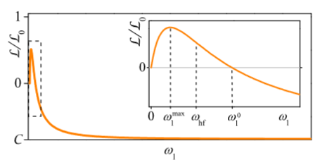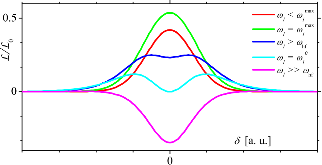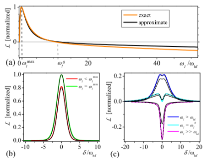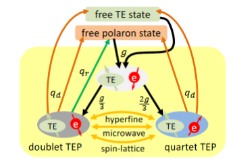Comparative analysis of magnetic resonance in the polaron pair recombination and the triplet exciton-polaron quenching models
- Ames Lab. and Iowa State Univ., Ames, IA (United States)
- Univ. of Utah, Salt Lake City, UT (United States)
We present a comparative theoretical study of magnetic resonance within the polaron pair recombination (PPR) and the triplet exciton-polaron quenching (TPQ) models. Both models have been invoked to interpret the photoluminescence detected magnetic resonance (PLDMR) results in π-conjugated materials and devices. We show that resonance line shapes calculated within the two models differ dramatically in several regards. First, in the PPR model, the line shape exhibits unusual behavior upon increasing the microwave power: it evolves from fully positive at weak power to fully negative at strong power. In contrast, in the TPQ model, the PLDMR is completely positive, showing a monotonic saturation. Second, the two models predict different dependencies of the resonance signal on the photoexcitation power, PL. At low PL, the resonance amplitude ΔI/I is ∝PL within the PPR model, while it is ∝P2L crossing over to P3L within the TPQ model. On the physical level, the differences stem from different underlying spin dynamics. Most prominently, a negative resonance within the PPR model has its origin in the microwave-induced spin-Dicke effect, leading to the resonant quenching of photoluminescence. The spin-Dicke effect results from the spin-selective recombination, leading to a highly correlated precession of the on-resonance pair partners under the strong microwave power. This effect is not relevant for TPQ mechanism, where the strong zero-field splitting renders the majority of triplets off resonance. On the technical level, the analytical evaluation of the line shapes for the two models is enabled by the fact that these shapes can be expressed via the eigenvalues of a complex Hamiltonian. This bypasses the necessity of solving the much larger complex linear system of the stochastic Liouville equations. Lastly, our findings pave the way towards a reliable discrimination between the two mechanisms via cw PLDMR.
- Research Organization:
- Ames Lab., Ames, IA (United States)
- Sponsoring Organization:
- USDOE
- Grant/Contract Number:
- AC02-07CH11358; FG02-06ER46313
- OSTI ID:
- 1417356
- Alternate ID(s):
- OSTI ID: 1415524
- Report Number(s):
- IS-J-9557; PRBMDO; TRN: US1801042
- Journal Information:
- Physical Review B, Vol. 97, Issue 3; ISSN 2469-9950
- Publisher:
- American Physical Society (APS)Copyright Statement
- Country of Publication:
- United States
- Language:
- English
Web of Science
OLEDs as models for bird magnetoception: detecting electron spin resonance in geomagnetic fields
|
text | January 2019 |
| OLEDs as models for bird magnetoception: detecting electron spin resonance in geomagnetic fields | text | January 2019 |
Similar Records
Optically Detected Magnetic Resonance Studies on π-conjugated semiconductor systems
Comprehensive photoluminescence-detected magnetic-resonance study of C{sub 60} and C{sub 70} glasses and films





